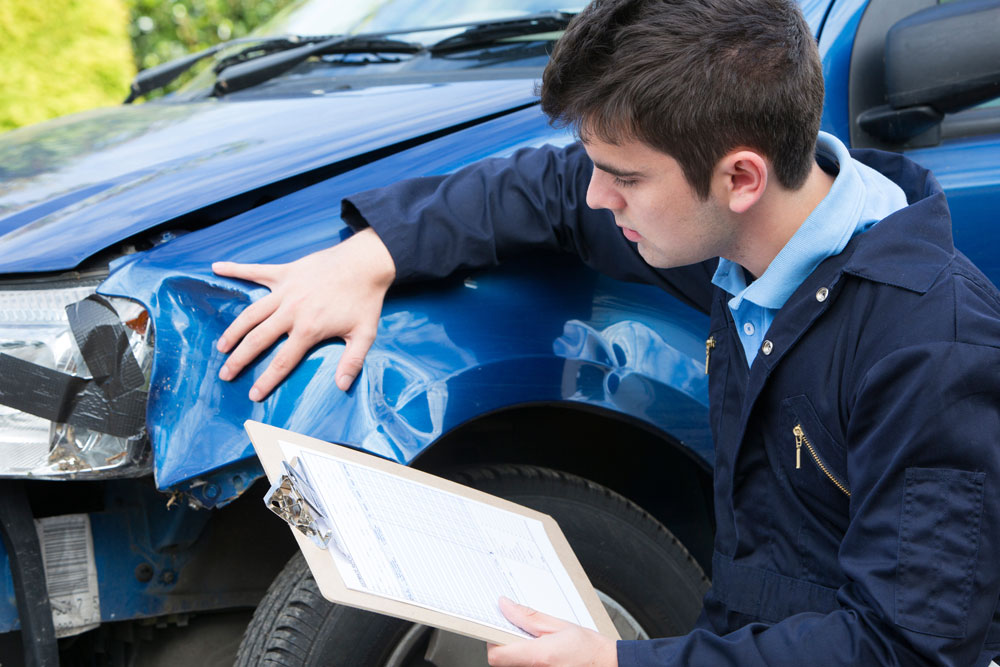When your vehicle is damaged and needs repair, one of the first steps is obtaining an auto body repair estimate. This document is crucial for understanding the scope of work, the cost involved, and the time required to restore your car to its original condition. Knowing what should be included in an estimate can help you make informed decisions and avoid unexpected costs. Let’s break down the essential components of an auto body repair estimate.
1. Detailed Damage Assessment
What does a detailed damage assessment entail?
- Visual Inspection: The first step in creating an estimate is a thorough visual inspection of the vehicle. Technicians will examine the extent of the damage, both visible and hidden, to determine what needs to be repaired or replaced. Exoticmotors.net provides exceptional auto body repair services in Bellvue, WA, ensuring every detail is meticulously assessed and addressed. Photographic evidence is often taken to document the damage, which can be useful for insurance purposes and for reference during the repair process.
- Photographic Evidence: Many repair shops will take photos of the damage to document its extent. These photos can be useful for insurance purposes and for reference during the repair process.
2. Labor Costs
How are labor costs calculated?
- Hourly Rates: Labor costs are typically calculated based on the hourly rate charged by the repair shop. This rate can vary depending on the shop’s location, the complexity of the repair, and the technician’s expertise.
- Estimated Hours: The estimate should include an estimated number of hours required for each repair task. This gives you an idea of how long the repairs will take and allows you to budget accordingly.
3. Parts and Materials
What should you look for in the parts and materials section?
- New vs. Used Parts: The estimate should specify whether new, used, or aftermarket parts will be used in the repair. Each type of part has different cost implications and can affect the overall quality of the repair.
- Parts List: A detailed list of all parts required for the repair, including part numbers and prices, should be included. This transparency helps you understand the cost breakdown and ensures that all necessary parts are accounted for.
4. Additional Repairs
Are there any additional repairs to consider?
- Supplemental Repairs: Sometimes, additional damage is discovered once repairs begin. The estimate should outline the potential for supplemental repairs and how they will be addressed, including any additional costs that may arise.
- Hidden Damage: Hidden damage might not be apparent during the initial inspection. It’s important to discuss with the repair shop how such damage will be handled and documented.
5. Paint and Finish Work
How is paint and finish work estimated?
- Paint Costs: Painting is a significant part of many auto body repairs. The estimate should include the cost of paint, primer, and clear coat, as well as labor for painting and finishing the vehicle.
- Blending and Matching: To achieve a seamless finish, blending and color matching may be required. This process ensures that the repaired area matches the rest of the vehicle. The estimate should detail these steps and their associated costs.
6. Sublet Work
What is sublet work and why is it important?
- Specialized Services: Some repairs may require specialized services that the repair shop cannot perform in-house, such as frame straightening or advanced electrical work. These tasks are often subcontracted to specialists.
- Sublet Costs: The estimate should include the cost of any sublet work and specify the services to be performed. Understanding these costs helps you see the full picture of the repair process.
7. Miscellaneous Fees
What other fees should you expect?
- Disposal Fees: Repairing a vehicle often involves disposing of damaged parts and hazardous materials. Disposal fees cover the cost of safely removing these items.
- Administrative Fees: Some shops may charge administrative fees for processing paperwork and handling insurance claims. These fees should be clearly outlined in the estimate.
8. Warranty Information
What should you know about warranties?
- Warranty Coverage: The estimate should detail any warranties provided on parts and labor. This information is crucial for understanding what is covered if issues arise after the repair is completed.
- Warranty Duration: Make sure to note the duration of the warranty and any specific conditions or limitations that apply.
9. Insurance Coordination
How does insurance coordination affect the estimate?
- Insurance Estimates: If you’re filing an insurance claim, the repair shop will often work with the insurance company to create an estimate. This coordination ensures that the repair costs are covered according to your policy.
- Approval Process: The estimate should explain the approval process with your insurance company and any steps you need to take to facilitate this process.
Conclusion: Ensuring a Comprehensive Auto Body Repair Estimate
Obtaining a detailed and comprehensive auto body repair estimate is essential for understanding the full scope of the repairs needed for your vehicle. By knowing what to look for in the estimate, you can make informed decisions and avoid unexpected costs.
Have you recently needed auto body repairs? Let’s discuss your experiences and any questions you have about the estimate process. Share your insights, and let’s ensure you get the best possible outcome for your vehicle repair needs!
